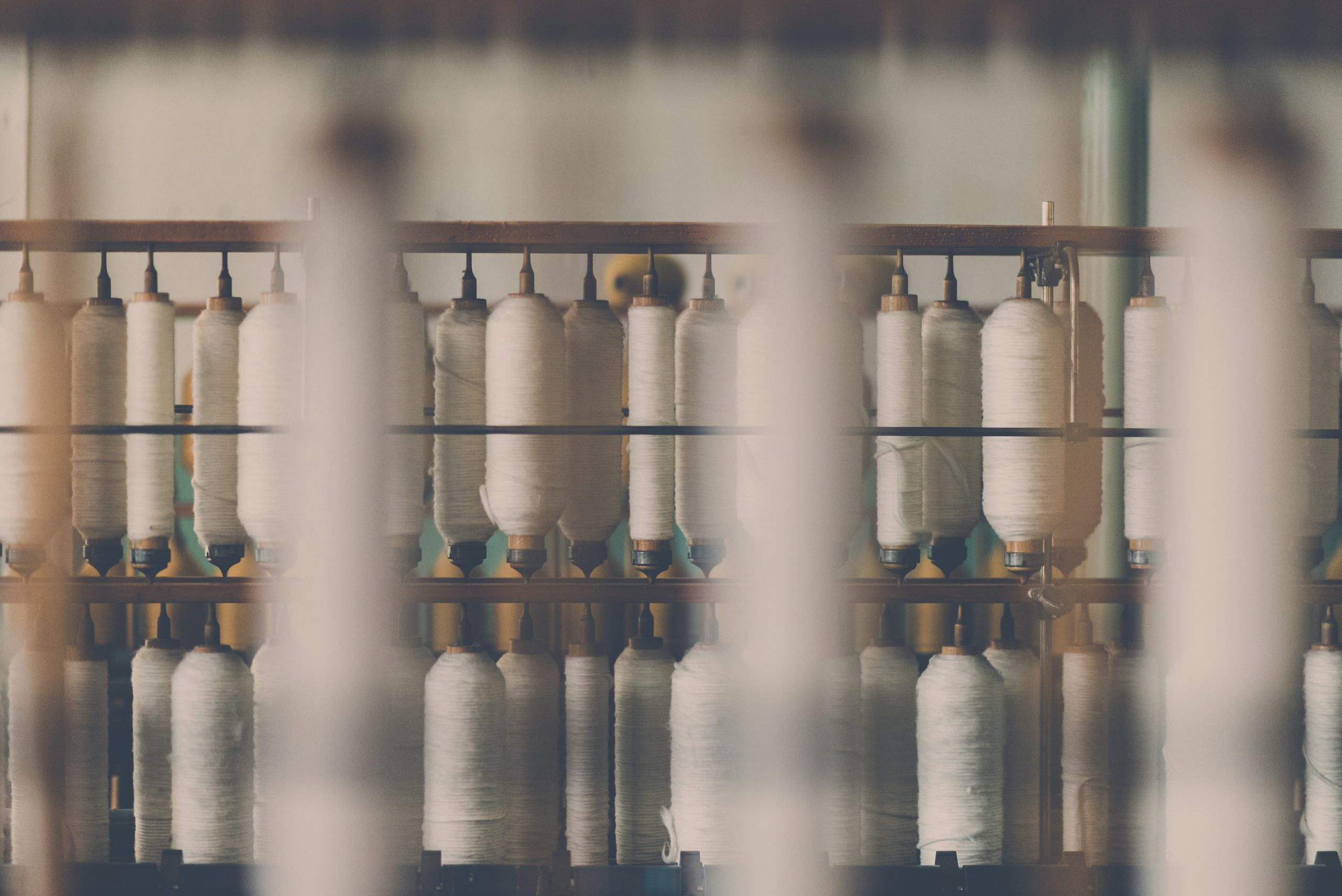How can biodesign help make human consumption more sustainable? Photo credit: Janko Ferlič via Unsplash
‘The biggest innovations of the twenty-first century will be the intersection of biology and technology. A new era is beginning.’ Here Steve Jobs envisioned the profound potential of biodesign, a dynamic and emerging movement that integrates biological systems into the design process. This interdisciplinary field bridges biology and engineering, offering creative solutions to the world’s most complex challenges. From carbon-capturing construction materials to fungi-based leather and algae-derived yarn, biodesign promises a future where natural processes and materials are harnessed for sustainability and innovation. Yet, as biodesign flourishes, it prompts us to reflect on whether design can be a vehicle towards a better relationship with the natural world.
This interdisciplinary field bridges biology and engineering, offering creative solutions to the world’s most complex challenges.
Biomimicry to Biodesign
Predating biodesign, biomimicry is the ancient practice of seeking design inspiration from nature’s time-tested patterns and strategies. It serves as a foundation for the emerging field of biodesign in which these natural resources are physically incorporated into design products, not just inspired by them. In the 15th century, polymath Leonardo Da Vinci famously demonstrated one of the earliest examples of biomimicry. He observed the flight of birds, producing detailed sketches of proposed “flying machines”—little did he know that these simple yet profound drawings would later inspire the Wright brothers to build the first successful motor-operated aeroplane. In 1997 Janine M. Benyus popularised the concept with her book Biomimicry: Innovation Inspired by Nature. From George de Mestral’s burrs-inspired invention of Velcro to the aerodynamic Japanese bullet trains inspired by a kingfisher’s beak, she highlights many technologies we rely on today that are influenced by nature.
The 20th and 21st centuries brought revolutionary advancements in computer technology, materials science and genetic engineering that paved the way for biodesign to move beyond mere imitation to the creation of new living materials. This shift was in part driven by the urgent need to address the accelerating degradation of our environment. Traditional industrial systems, rooted in linear and extractive logic, stand in opposition to the regenerative processes of nature. To counter this, the vision emerged of a symbiotic relationship where innovation and natural systems collaborate, fostering solutions that are sustainable and mutually beneficial rather than exploitative.
Current Innovations
Biodesign is revolutionising the construction industry with solutions such as biodegradable structures, photosynthetic building facades, and biomaterials. Among these, carbon-sequestering concrete stands out as a game-changer in reducing the carbon footprint of construction, as the concrete industry accounts for 8% of global CO₂ emissions. This innovative material utilises the bacterial enzyme Carbonic Anhydrase (CA) to catalyse the reaction between Ca²⁺ ions and atmospheric CO₂, forming calcium carbonate crystals with properties comparable to the existing concrete matrix. Not only does this process capture CO₂, but the material’s self-healing capability enables it to repair cracks, reducing the need for replacements and extending its lifespan. Furthermore, since enzymes are catalytic and not consumed in the process, they remain active within the concrete matrix, enhancing cost-effectiveness and sustainability. By addressing both environmental and economic challenges, bio-concrete exemplifies how biodesign can reshape construction for a greener future.
…carbon-sequestering concrete stands out as a game-changer in reducing the carbon footprint of construction, as the concrete industry accounts for 8% of global CO₂ emissions.
Another fascinating avenue for biodesign is the reform of the fashion industry. In the current economy of overconsumption, the fashion industry’s damaging impact on the planet is ever increasing. A large proportion of this stems from the materials used. Fungi-derived ‘leather’ is a new competitor in the ethical fabrics market, aligning with the shift of social standards away from animal and synthetic polymer-derived leathers. The humble fungus is a source of the structural polymer chitin, which shares similar properties with cellulose found in plants. Chitin is in the cell walls of hyphae, the tubular structures that form a mycelium network, a vast fungal structure connecting plants and trees together. Mycelium undergoes fermentation using agricultural by-products as feedstock, followed by dehydration and pressing to produce fungal leather. Unlike plants, fungi do not require light for growth, enabling cultivation under ambient conditions with minimal energy input, underscoring their sustainability. This eco-friendly material has been commercialized by companies like the Indonesian biotechnology firm Mycotech, which released a range of mycelium-derived products in 2019.
Unlike plants, fungi do not require light for growth, enabling cultivation under ambient conditions with minimal energy input, underscoring their sustainability.
Algae, one of the most renewable and fast-growing organisms on Earth, is another key biological resource driving innovation in textile biodesign. For example, AlgiKnit, a New York-based biomaterials company, has developed a compostable yarn using alginate, a readily available biopolymer extracted from seaweed and algae. This yarn operates within a closed-loop life cycle: at the end of its use, it can be broken down by microorganisms, allowing its nutrients to be reclaimed and used to produce the next batch. This sustainable process highlights algae’s potential to revolutionize textiles while minimizing environmental impact.
An Easy Fix?
Biotechnologies have faced criticism for promoting bio-exploitation…
While there is great potential for biodesign, it does not necessarily equate to sustainable and ethical practice. Biotechnologies have faced criticism for promoting bio-exploitation, particularly when living organisms are used in ways perceived as unethical. A prime example of this is the silk industry, which boils silkworms alive to extract silk from cocoons, a practice that raises significant ethical concerns. There may even be systemic concerns that biodesign is simply humanity’s habitual overconsumption manifesting itself in ways directly exploitative of nature. This underscores the seemingly impossible question of how we can use and live with nature responsibly. On the other hand, the fast-paced development of biotechnologies can play a crucial role in building sustainable societies. In time, these could help repair the damage humans have caused to the environment, thereby reshaping our relationship with the natural world. It is essential to approach this practice with humility, recognising that emulating and designing with nature requires a deep understanding of its significance to avoid perpetuating exploitative cycles.
The future of biodesign is incredibly exciting. Concepts for space exploration like bio-based building materials and oxygen-generating plants could take it beyond Earth to support human life on Mars. These utopian goals show that nature can be a mythical reference and an inexhaustible source for the imagination, which pushes us to explore every possibility. For these possibilities to come to fruition, scientists, designers, and consumers must embrace a biocentric worldview, mending the human-nature divide.





